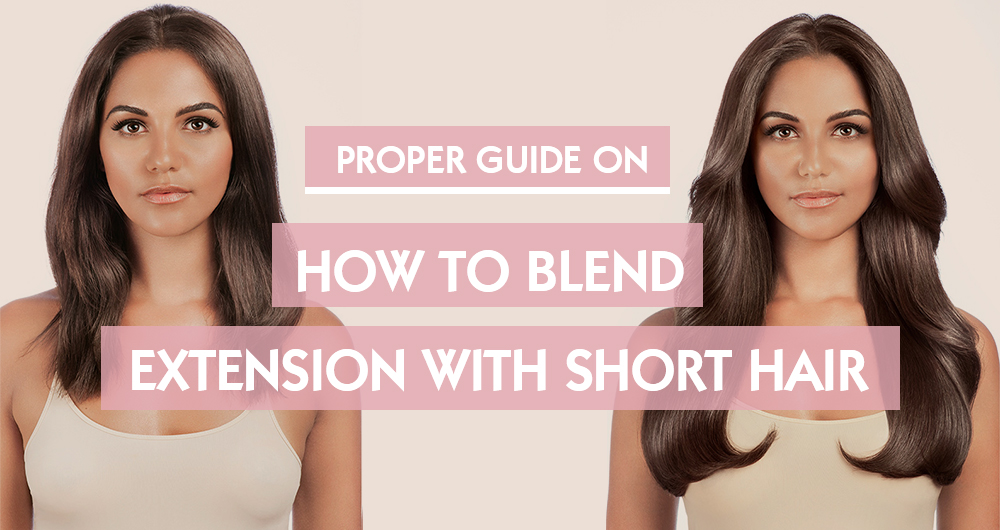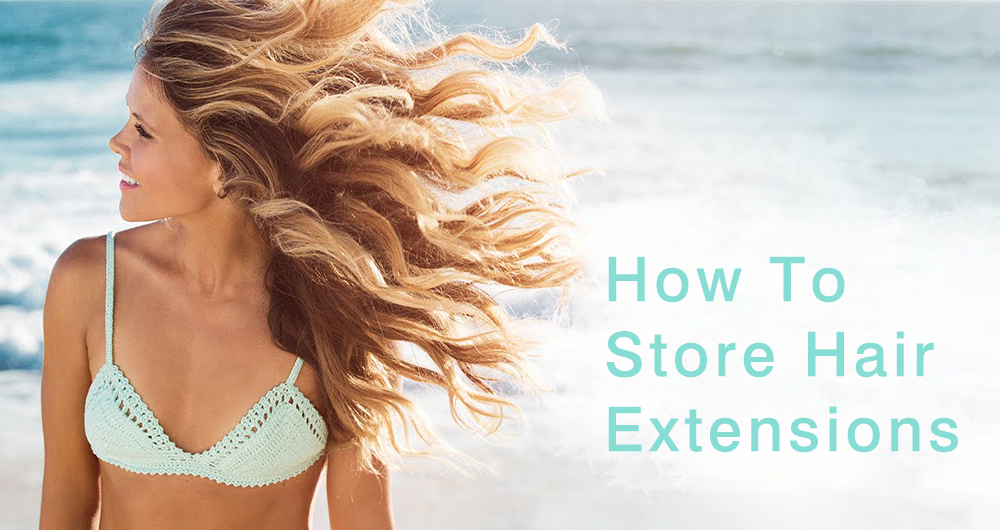Hair Guide: Natural Hair Types
Shop Clip In Hair For Black Hair
Just as everyone is made unique and different, curly hair is the same way. Even if we share having naturally curly hair not all curly hair is the same. What works for one curly haired person may not work for someone else, why is that? Our genes, hormones, health, and environment all play a role in the type of curly hair you have. The reason why curly hair differs from person to person depends on hair porosity, curl pattern, density, and elasticity. Understanding your curly hair can help manage and grow healthier and happier curls.
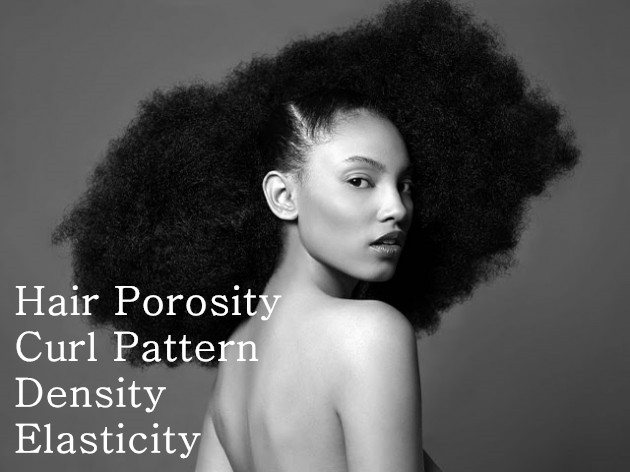
From damaged to healthy hair
What can you do to get rid of damaged hair and grow out your natural hair? Curly hair requires special care and tends to be fragile and easily damaged. Constant use of chemicals and using a lot of heat such as flat-ironing and blow drying can leave your hair damaged. Silicone-based shampoos, bleaching, and heat all hurt and damage your hair. Cutting damaged hair can help prevent breakage as well as trimming split-ends. Keeping your hair moisturized based on your hair type can help your hair grow from damaged hair to healthy curls.
Understanding your curly hair
You’re naturally curly, so now what? Understanding how your hair works will help save you time and money by eliminating using products and routines that are not right for your hair type. Hair grows from pockets in the skin called follicles; emerging from each follicle is the hair shaft. As hair passes through the skin it goes through an oil gland which gives hair its shine. Hair is primarily made up of keratin which is a protein. Having an understanding of how hair grows can provide you with better insight on what products can help aid in hair growth. Having a healthy lifestyle such as drinking plenty of water and eating healthy play a role in growing healthy beautiful curls.
Hydration
What is hydration? Hydration is adding water much like how we do to our bodies but to our hair. Humectants, which contain glycerin, can draw water to the hair shaft and is better used for low porous hair types while anti-humectants are best for highly porous types of hair. The weather also plays a role in the hydration of your hair. Those with curls will notice that in the winter their hair is dry and brittle, this is because of a lack of moisture in the air. By paying attention to humidity, you can combat the weather by applying the proper sealers and moisturizers to your hair.
Moisture
Not to be confused with hydration, moisture can never hydrate curls as it is not water. However, moisturizers attract water to your hair by acting as sealers to retain the hydration in your hair. Moisturizing your hair with oils or creams can help smooth your hair cuticle and lock in moisture as to not let out water out. Moisturizers that are water-based and contain oils which are better for curly hair.
Hair porosity
What is porosity? Porosity in laymen’s terms is a measurement of how moisture is able to penetrate and absorb into your hair. There are three types of hair porosity high, medium, and low.
There are several simple tests you can perform to determine which category your hair falls in. Place a few strands of hair into a glass of water and let them sit for about five minutes. If your hair floats you have low porosity, if it sinks slowly or stays in the center of the glass for long you have medium porosity, and if your hair sinks to the bottom fairly quickly, you have high porosity.
Another way to check your porosity is by testing a few strands of your hair by sliding your fingers on a strand towards the scalp. If your fingers slide smoothly, then you have low porosity. If you feel bumps as you slide your finger up the strand, then you have medium to high porosity; the more bumps you feel is high porosity, and fewer bumps is medium porosity.
The last test is determined by spritzing water on a section of your hair. If your hair absorbs the water quickly, then you have high porosity hair, if it takes a bit longer to absorb you have medium porosity hair. If you notice that there are droplets on your hair that are not absorbing into your hair, you have low porosity hair.
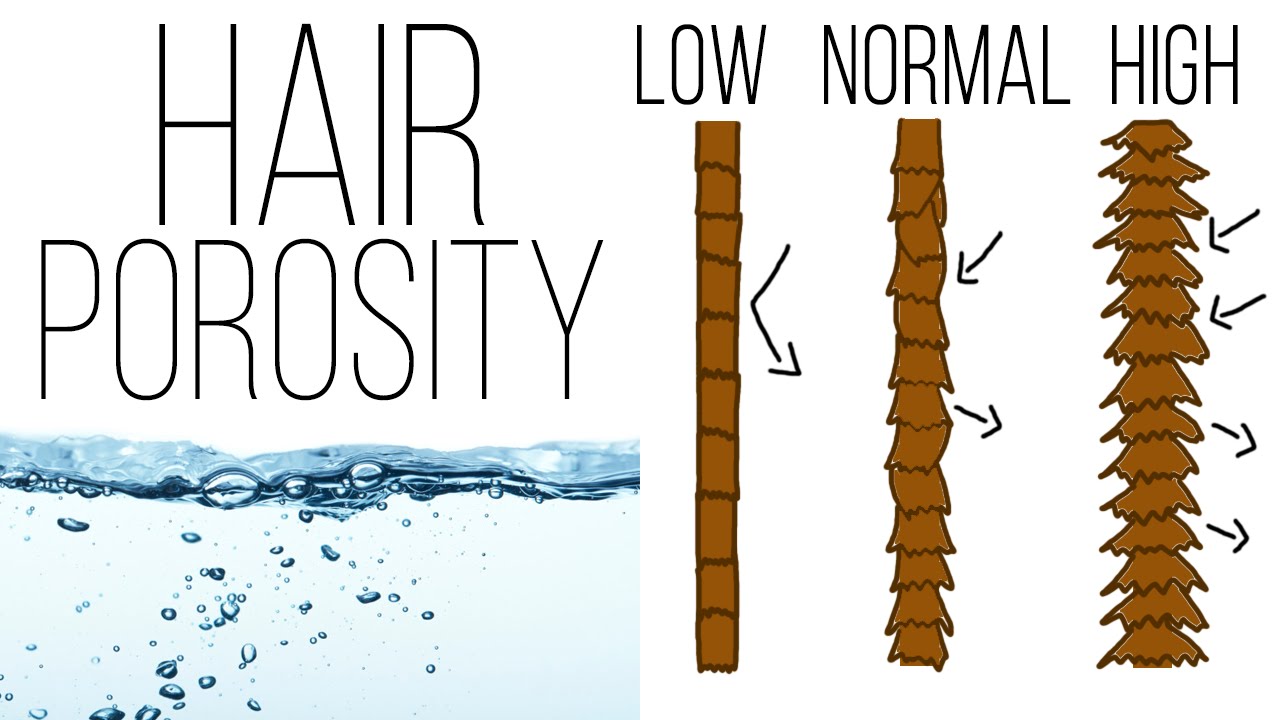
High porosity
High porosity hair is highly porous and has lifted cuticles which allows the hair to take in and absorb moisture easily. Since high porosity hair absorbs moisture easily it can also lose moisture easily, which can lead to frizz and tangling; because of this, it is best to seal in moisture in your hair. Leave-in conditioners, deep conditioners, sealers, and moisturizers can help fill in the gaps in the cuticles and protect your hair from losing its moisture. Rinsing with cold water can help seal the cuticle and help prevent frizz by maintaining its moisture. High porosity hair dries quickly, so it’s best to let it air dry and using minimal heat. Monthly protein treatments can help high porosity hair maintain strong and not break as easily, as it fills in the holes in the cuticle. The key to happy curls with high porosity hair is to maintain and keep it moisturized.
Medium porosity
Medium porosity hair has a looser cuticle layer and allows a steady amount of moisture to enter and leave the hair shaft. Compared to high and low porosity hair, medium porosity hair requires the least amount of maintenance as the hair has a balance of moisture. Because of this, chemically changing medium porosity hair overtime can cause it to become more porous which will cause that hair to become high porosity. Occasionally using deep conditioners and protein should be used but not often. Regular use of leave-in conditioners and moisturizers can help nourish medium porosity hair. Keeping medium porosity hair healthy is best maintained by not overdoing or underdoing anything and having a routine for keeping the hair moisturized.
Low porosity
Low porosity hair has tight bounded cuticles that does not easily allow moisture in but in contrast, retains moisture very well. Since the cuticle lays flat in low porosity hair, it is very prone to product build-up. Using monthly clarifying shampoos to clear the hair from buildup helps the hair from becoming stiff and straw-like. To prevent build-up, it is best to use light leave-in conditioners that are water-based and use light oils. In order to keep products from sitting on the hair using heat to temporarily open the cuticle to allow moisture in, such as steaming conditioned hair. The primary way to have healthy low porosity hair is by allowing the moisture to get into the hair shaft and by keeping the scalp free from product build-up.
Curl pattern
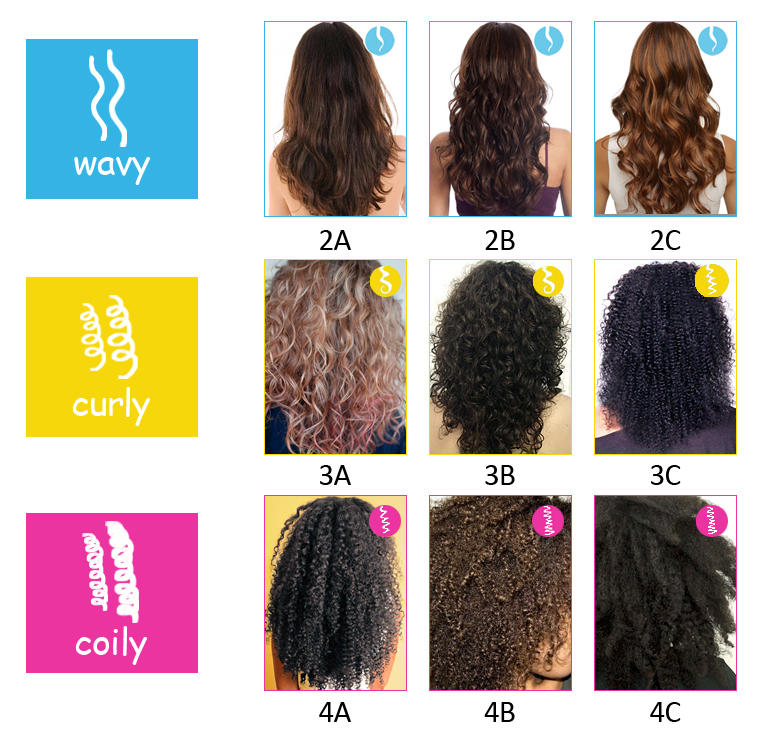
We offer a wide range of clip in hair extensions for black women
There are many different types of curl patterns, from very tight to very loose curls. Curls are defined in three categories: types 2, 3, and 4 and three sub categories a, b, and c which is based on the shape of the curl. You may have more than curl type in your hair varying from the back, sides, and front of your hair.
Type 2 hair
Type 2 hair is better known as wavy hair which is between straight hair and curly hair.
Type 2a hair is the most subtle type of curl pattern as it is has very loose “S” shaped strands. This hair type can easily go between curly and straight hair without damaging the hair.
Type 2b hair is a little more defined than type 2a hair. This hair type can often suffer from frizz and responds well to oils and mousse.
Type 2c hair has a more defined “S” shaped curl pattern. This hair type is often coarse and also suffers from frizz like type 2b hair.
Type 3 hair
Type 3 hair is known as just curly hair, and has a dense bouncy “S” shape spirally curls. Type 3 curls are prone to losing moisture and frizz easily so it needs extra care to keep the hair from dehydrating.
Type 3a has large spiral defined curls that are the loosest of the type 3 hair.
Type 3b is between the size of 3a and 3c type hair, which is about the size of a marker. This type of hair has a lot of volume but if not properly taken care of can easily frizz.
Type 3c has the tightest of the type 3 type of curls with the size of about a pencil or straw. This type hair is often coarser which means it needs a lot more hydration than its counterpart.
Type 4 hair
Type 4 hair is also known as kinky or coiled hair. These curls can vary from “S” and “Z” shaped curls. This hair type has a lot of volume and body but is very prone to frizz, breakage, and dehydration, so it needs the most moisture and gentle care out of the three categories.
Type 4a is more compact than 3c type hair and denser. It still has more of a “S” shaped curl.
Type 4b is very coiled and follows a more “Z” shaped curl, unlike 4a type hair.
Type 4c is the tightest curl pattern and has a lot of volume. This curl type as shrinks about 50% of its length.
Elasticity
Elasticity refers to how curls return to its original shape and size when force is applied, such as pulling or bending. Depending on your hair pattern, curls that are smaller in nature cannot withstand the same force as curls that are larger. Elasticity is dependent on hydration and proteins and elasticity can be maintained by having an adequate amount of hydration and protein in the hair. To keep the elasticity of your hair, you must prevent heat damage, excessive water, chemicals, and over processing your hair. To keep the curls in its natural state, it is best to keep it hydrated and being gentle to the hair by not over styling or touching or combing through dry hair. Because some people have varying curl patterns some curls are more elastic than others, paying attention to these small details can help maintain your beautiful curls.
Density
The density of your hair is determined by how tightly strands of hair are grouped together. Your hair texture, porosity, and type affect what type of hair density you have. You can easily tell how dense your hair is by another simple test. With clean hair in its natural state look in the mirror to test your density. If your scalp is easily visible you have low density, if it is somewhat visible, then you have medium density, and if it is barely visible you have high density.
High Density
High density hair benefits from trapping in moisture and using products that keeps curls together. Also using products that reduce volume can help in maintaining its shape. Ideal products for highly dense hair are butters, creams, and gels.
Medium Density
Enhancing this hair type’s texture is essential, and it can use a wide variety of products. Definition can be achieved by using mousse with medium density hair.
Low Density
Maintaining density is ideal for this hair type by using products that are lightweight and that add volume to your curls. Mousse and lightweight cremes can help define and add volume.
Products
When looking for products keep in mind what you have learned about your hair. Use products that enhance and define your curls based on your hair type. Read the ingredients on the product to determine if it’s good for your hair or not. Ingredients that are listed first contribute the largest, while the one listed last contributes the least. Ingredients are listed in order of quantity but still be wary of harmful ingredients for your hair.
What to avoid
Many hair products, such as shampoos, use sulfates which pulls dirt from your hair, but it also strips your hair of oils. Sulfates work best for hair that is too oily but it is usually not good for curly hair as it tends to dry and remove it of its natural oils. Ammonium Laurel, Sodium Lauryl, and Sodium Laureth should also be avoided as they are types of sodium based sulfates. Conditioners with silicones should also be avoided as they build up on the hair and cannot be washed out with sulfate-free shampoos. Some alcohol based products should also be avoided as they dry out your hair but note that not all of them are bad for curly hair. Some alcohol-based products to avoid are Ethanol, Ethyl, Isopropyl, and Isopropanol. Petroleum, Lanolin, and mineral oils should also be avoided as they clog your pores which in turn can cause build up and not allow your natural oils to moisturize your hair. If you have sensitive skin, fragrances should be avoided as they can be an allergen to the skin, instead use essential oils in your products. Never apply essential oils directly to your skin as it can irritate the skin, dilute it first with water or with your favorite hair product.
What to use
The best products to use on your hair vary from your hair type, but most curl types can still benefit from similar products. Products that help hydrate add moisture, and define your curls are what you need to keep a lookout for. Deep conditioners, natural oils, leave-in conditioners, pre-poos, shampoos, creams, butter, gels, and mousses are all products you can use in your curly hair. Based on your hair type look for ingredients in these products that will best enhance your hair. While curly hair products can be costly it does not mean that the more expensive it is the better it is for your hair; cheaper products can still be found and used just as well. With the proper research, you can find the right products for your hair.
Open the fridge
In addition to hair products purchased from the store, natural foods such as honey, oils, eggs, baking soda, apple cider vinegar, fruits, and vegetables can also be applied to your hair. Ultimately natural foods are being used in your products so they can also be used directly from your fridge onto your hair. Harsh products like baking soda and apple cider vinegar should be used with care, be sure to test a section of your hair first to see if they are right for you. Be sure to thoroughly wash out foods from your hair that can cause bacteria to grow or that may trigger your allergies.
Hair regimen
Having a healthy routine is most beneficial for curly hair as it helps grow and define it. Many Youtube channels that focus on curly hair and show many styles you can use to protect your hair. There are also many videos that help with what you should do with your hair from day to day and what brands are ideal for your hair type.
Massage your scalp to help encourage hair growth as it increases blood flow and oxygen to your follicles. Use only the tips of your fingers to massage your scalp lightly. You can also purchase a scalp massaging brush for your hair if you prefer not to use your hands.
Based on your hair type you may want to wash your hair more or less based on how it receives moisture and if it is prone to product build-up. Also, some prefer to entirely skip using shampoo and use a conditioner instead, while other hair types might want to stick to using sulfate-free shampoo. When shampooing, do not apply the product to your hair; apply the shampoo directly to your scalp, and when you rinse, the shampoo will naturally run through your hair. Deep-conditioning curly hair helps the hair maintain maximum moisture and is best applied with heat, such as a heated cap.
Leave-in conditioner, gels, and creams should never be applied directly to your scalp, as this can cause build up and block your pores. Instead, apply your favorite oil directly to your scalp as it places the oils back through your hair naturally.
Using a cotton towel after washing your hair can take out the moisture your curls need and can also cause your hair to frizz. Instead, use a microfiber towel to dry your hair which causes less frizz than its counterpart. You can also use a diffuser to dry your hair which is very beneficial for low porosity hair types as the diffused heat can open the cuticle to get the moisture in.
Humidifiers can help add moisture to your hair especially in regions that have dry air, and it can also be an extra boost for your breathing.
A silk pillowcase should replace your cotton or silk pillowcases as they can steal the natural oils in your hair at night and cause frizz. If you prefer you can use a silk scarf or head wrap instead of the pillowcase.
Curls can be very demanding and need a lot of attention and care. By understanding and embracing everything about your unique curls, you can allow them to become beautiful tresses that show off who you are.

